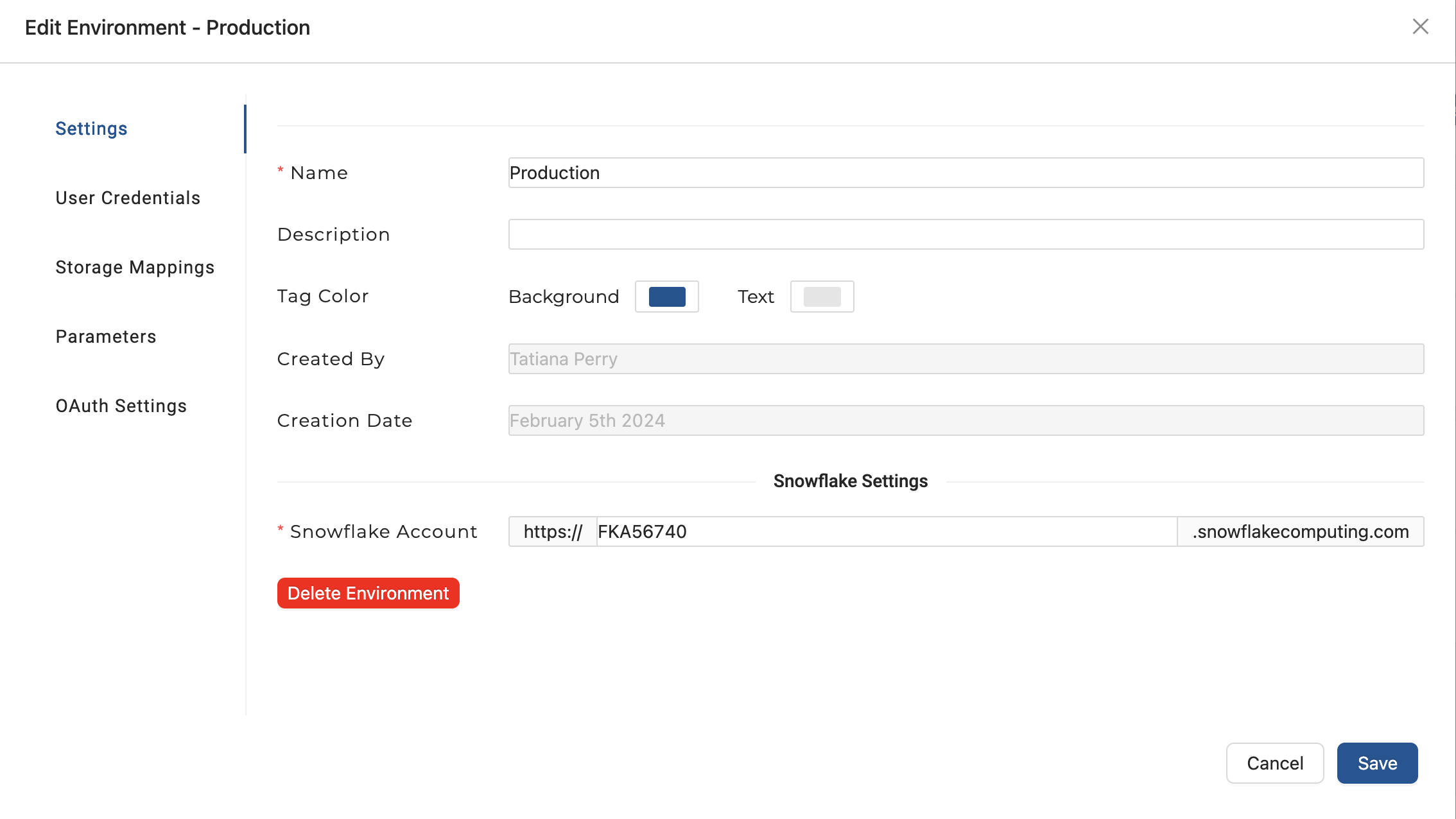Environments
Environments are used for deploying your data pipeline to your data platform. They manage efficient deployment strategies and allow you to configure both your Workspace and Environment. This lets you complete your development in a Workspace and then deploy to any Environment you want, such as production or QA, with each having different Storage Locations, Storage Mappings, Parameters, and other options.
Key Concepts
- Workspace: Where you develop and test your data pipeline.
- Environment: Where you deploy or refresh your production data pipeline.
- Development vs Deployment: No development happens directly in an Environment - all changes come through defined Git branches and commits.
Configure Your Environment
- In your Workspace, go to Build Settings > Environments. Every Coalesce workspace comes with a DEV environment.
- Select the Environment you want to configure.
- Settings - Includes general account information such as the Environment name and the Snowflake connection URL. Take note of the Environment ID. You'll use this when making API requests to see information about the deployment.
- User Credentials - Configure how you want to connect to your Data Platform. If you want to use OAuth (recommended), you'll also need to add your OAuth Settings.
- Storage Mappings - To deploy or refresh your environment, you need to have your Storage Mappings setup. Storage Mappings are represent the physical locations in your Data Platform. This is where your data pipeline will deploy. Learn more about Storage Mappings.
- Parameters - Parameters are defined as a JSON blob set by the user that can be accessed in the metadata during template rendering. Learn more about Parameters.
- OAuth Settings - If you're using OAuth to connect to Snowflake, you'll need to configure OAuth here.

Important Notes
- Objects are created in a steady state via Git branches and commits
- Data loading occurs on demand, with schedules/triggers, or an automated process such as CI/CD pipeline.
- Column changes use ALTER instead of DROP/CREATE
- Deleted objects are automatically cleaned up (DROPPED) in your data platform
- No Coalesce development can be completed directly against an Environment.
Environment Configuration Required
You must have your Environment configured for deploy and refresh.
What's Next?
After configuring your Environment, you can: